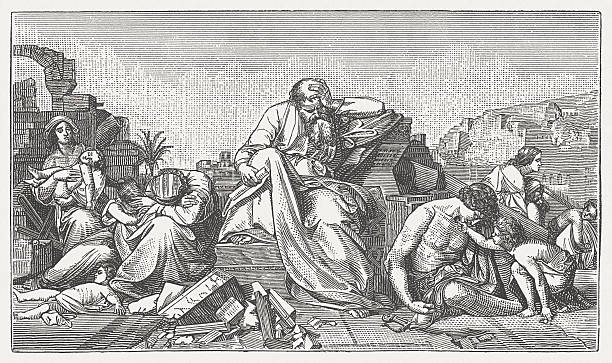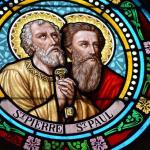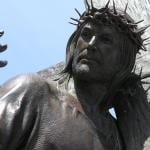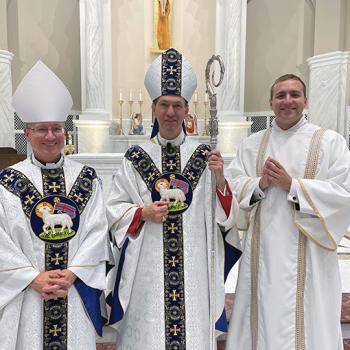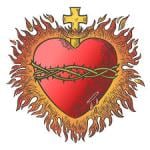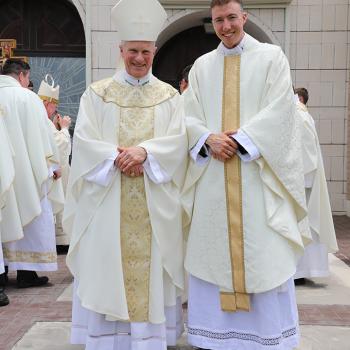Jeremiah is key book in the Old Testament. Jeremiah was a major prophet because we know a great deal about his background (See Jer. 1). The book that bears his name is the longest in the Hebrew Bible and deals with many key themes that influence the course of the Israelites. His prophetic ministry spans the course of four kings, the invasion of Babylon, and subsequent exile to Egypt. Jeremiah is also known as the weeping prophet because his warnings or repentance and impending doom were ignored by the monarchy. He was ostracized as being crazy, but his message ultimately is a message of hope (Jer. 31).
Understanding the words of Jeremiah are imperative to understanding other parts of scripture. The backgrounds presented in Jeremiah offer historical clues and assist in understanding what the people were going through. These historical backgrounds are present in other parts of the Old Testament as well. Books such as Kings, Daniel, Ezekiel, and Lamentations are just a few that benefit from understanding he the historical backgrounds in Jeremiah. In addition to internal evidence within scripture, using comparative literature is also valuable. There are numerous documents from the Ancient Near East that date to the writing of Jeremiah that can offer a more diverse background to the happening that are read about. Ancient documents from Babylon, Sumeria, Egypt, and other Hebrew documents not only assist with the history taking place, but on understanding the different in prophecy between the nations. These differences, along, with idols were part of the reason as to why the Lord used Babylon as an instrument to punish the Hebrew people.

The Call of Jeremiah
In comparing literature of the ancient near east and Jeremiah 1:5 of Jeremiah is a good starting point. This is the call of Jeremiah and YAHWEH states that he knew Jeremiah since he was in the womb. Statements like this were not uncommon in other literature of the region. In ancient Egypt Amon told Pianski that he was known while in the womb[1]. Pianski ruled Egypt in the eighth century B.C., so this would have been very close to the time that Jeremiah lived. One of the main differences is that this type of proclamation from a deity in the ancient near east nearly always coincided with members of royalty. In the case of Jeremiah, he was a prophet chosen by God. His ministry would be to the kings of Judah, but also to the nations (Jer. 1:5). This is also a peculiarity within the context of the ancient near east.
This motif of being chosen before one was born also has roots several centuries before Jeremiah. In the Epic of Gilgamesh, Gilgamesh is said to have been destined for greatness when his umbilical cord was cut[2]. In comparing Gilgamesh and Jeremiah, a couple things stand out as of major importance. First and foremost is the literary style of the two. Jeremiah, though written in various literary themes is firmly historical. Gilgamesh is a literary epic that seeks to explain origins, but to establish himself as an authority figure. He was a real king who reigned in Mesopotamia around 3,000 B.C.
What the two have in common is that they were both sons of priests as Jeremiah was the son of the high priest Hilkiah (Jer. 1:1). However, Gilgamesh is a god-like figure, a demigod or sorts, while Jeremiah is firmly established as a chosen prophet who has been created. Though themes may have some commonality it is established that there is one God and he is sovereign over all creation. Furthermore, Jeremiah is commissioned as a prophet to the nations. This is also a key different as prophets in other nations either answered to the king or to the priests. In chapter one of Jeremiah we read that it is the Lord himself who is appointing him, but not only to Judah. He is a prophet to all peoples and his ministry will have a wide reach. Everything said to the nations will be in the context of the covenant with the Lord[3].
Later in Chapter One the Lord lays out the judgments that will soon come against Judah. When compared to other documents in the region this stands out. Most of the time these proclamations from deities in the ancient near east proclaim success[4]. One example from the Annuls of Thitmosis III describes how the god Re has trapped all of the traitors for an easy military conquest[5]. The Lord does the opposite with Jeremiah. The Lord states that the idolatry that the people and kings have been guilty of, and the enemies in the north will be used by him to bring judgment. YAHWEH prepares Jeremiah for a ministry that includes everyone turning against him and not listening to what he is trying to say. This is a stark contrast to how people were called from the womb in the ancient near east, but YAHWEH will be with him to help him endure.
Symbols in Jeremiah
In Chapter three of Jeremiah YAHWEH is calling the people to repent. This takes place in the time of king Josiah, who was the last righteous king of the land. YAHWEH outlines the unfaithfulness of the people and describes the destruction of the Northern kingdom, which was known as Israel. Jeremiah describes the Northern kingdom as “the faithless one” and Judah (the southern kingdom) as the “treacherous sister” (Jer. 3:6-7). The crimes of the north were the same as those in Judah, but their demise took place earlier and over a period of 100 years[6].
Another topic of consequence in Jeremiah 3:6 is the image of Israel on a high hill under every green tree. Jeremiah writes that this is where the Northern kingdom played the part of a harlot. From a historical standpoint the green tree is significant is Assyrian literature and iconography. The green tree in the palace of Ashurnasirpal II was known as the sacred tree[7]. This sacred tree was a sign of fertility and blessing from the gods, as a result this image was placed on various sacred images and in temples[8]. Consequently, this tree imagery and adultery in Jeremiah is compared to whoredom (Jer. 3:6). In other documents of the ancient near east, such as the Epic of Gilgamesh, the tree is seen as a sign of departure and eventual return[9]. However, the northern and southern kingdoms never return to the Lord. The Northern kingdom played with the idolatry which was present among the Assyrians, and the Assyrians would eventually overpower them, and the kingdom would be no more in 722 B.C.
Judah saw this and did not heed the warning of Jeremiah rather upped the ante. Instead of idolatry with the tree they added the stone (Jer. 3:9). The phrasing of the stone is significant and helps us interpret to whom Jeremiah is writing about. The Annuls of Idrimi provide some clues. The stone in ancient near east religion, particularly in Assyria and Babylon which Jeremiah is referencing, is important to the context. Stone thrones were sacred in these ancient near east texts and are a symbol of divinity[10]. Not only that but stone was also a universal symbol for the god Baal during this time[11]. Using this background one can surmise that the people, and thus the kingdom, were chasing after the blessing that appeared to have been being enjoyed by the superpower nations. As a result, they strayed from the covenant that they had made with YAHWEH.
A troubling image that Jeremiah paints occurs in Jeremiah 7:30. He describes evil that is done at Topheth. This place would eventually become known as Gehenna and is mentioned by Jesus in Mark 9:43 as a place of unending fire. Topheth was a place that became known for child sacrifice during this time[12]. The sacrifices were done to god Molech who ruled the underworld and was believed to deal with the dead ancestors of the one doing the sacrifice. This practice was common among the Phoenicians but is not unheard of in other ancient near east texts. An Assyrian legal document describes one offering there son to Sin and his daughter to Belteri[13].
Conclusion
There is much more that can be written about comparative literature and Jeremiah. From analyzing this book of scripture and texts of the ancient near east many enlightening things come to mind. The people were acting contrary to several things that the Lord had commanded. The were worshipping idols, involved in child sacrifice, and utterly forgot about YAHWEH. These backgrounds assist in understanding just how much the kingdom had strayed and why YAHWEH had to send a wake up call.
Bibliography
Dickson, Keith. “The Jeweled Trees: Alterity in Gilgamesh.” Comparative Literature 59, no. 3 (2007): 193–208. Accessed October 4, 2020. https://www.jstor.org/stable/40279374.
Eichler, Raanan. “Jeremiah and the Assyrian Sacred Tree.” In Vetus Testamentum.,, 403–413. N.p.: Brill, 2017.
Finkelstein, Israel. The Forgotten Kingdom: The Archaeology and History of Northern Israel. Atlanta: Society of Biblical Literature, 2013. Accessed October 4, 2020. ProQuest Ebook Central.
Gilmour, Rachelle. “Remembering the Future: The Topheth as Dystopia in Jeremiah 7 and 19.” Journal for the Study of the Old Testament 44, no. 1 (September 2019): 64–78. https://doi.org/10.1177/0309089218778567.
Jastrow, Morris. “Jeremiah and the Assyrian Sacred Tree.” In the Religion of Babylon and Assyria. N.p.: Project Gutenberg, n.d.
Kugler, Robert A., and Patrick J. Hartin. An Introduction to the Bible. Grand Rapids, MI; Cambridge, U.K. Grand Rapids: William B. Eerdmans Publishing Company, 2009.
Matthews, Victor. Old Testament Parallels: Laws and Stories from The Ancient Near East. 4th ed. New York: Paulist Press, 2017.
Oswalt, John. The Bible Among the Myths. Grand Rapids: Zondervan, 2009.
Pryke, Louise. Gilgamesh. New York: Abington, 2019.
Walton Et Al. The Bible Background Commentary. Downers Grove: Intervarsity Press, 2012.
[1]. Walton Et Al, The Bible Background Commentary (Downers Grove: Intervarsity Press, 2012), 643.
[2]. Pryke, Louise, Gilgamesh (New York: Abington, 2019), 31.
[3]. Oswalt, John, The Bible Among the Myths (Grands Rapids: Zondervan, 2009), 153.
[4]. Robert A. Kugler and Patrick J. Hartin, An Introduction to the Bible, Grand Rapids, MI; Cambridge, U.K (Grand Rapids: William B. Eerdmans Publishing Company, 2009), 227.
[5]. Victor Matthews, Old Testament Parallels: Laws and Stories From The Ancient Near East, 4th ed. (New York: Paulist Press, 2017), 151.
[6]. Israel Finkelstein, The Forgotten Kingdom: The Archaeology and History of Northern Israel (Atlanta: Society of Biblical Literature, 2013), 120, accessed October 4, 2020, ProQuest Ebook Central.
[7]. Raanan Eichler, “Jeremiah and the Assyrian Sacred Tree,” in Vetus Testamentum,, (n.p.: Brill, 2017).
[8]. Morris Jastrow, “Jeremiah and the Assyrian Sacred Tree,” in The Religion of Babylon and Assyria (n.p.: Project Gutenberg, n.d.), 663.
[9]. Keith Dickson, “The Jeweled Trees: Alterity in Gilgamesh,” Comparative Literature 59, no. 3 (2007), accessed October 4, 2020, https://www.jstor.org/stable/40279374.
[10]. Matthews, Old Testament Parallels, 148.
[11]. Walton Et Al, The Bible Background Commentary, 644.
[12]. Rachelle Gilmour, “Remembering the Future: The Topheth as Dystopia in Jeremiah 7 and 19,” Journal for the Study of the Old Testament 44, no. 1 (September 2019), https://doi.org/10.1177/0309089218778567.
[13]. Walton Et Al, The Bible Background Commentary, 649.


